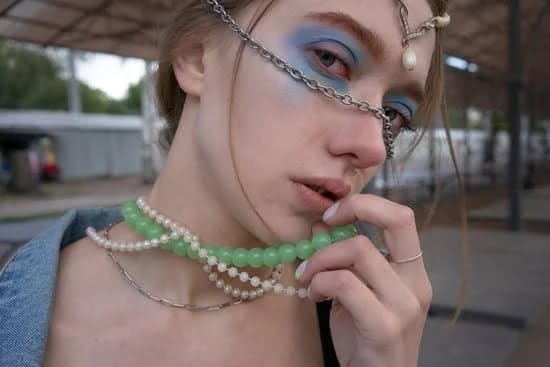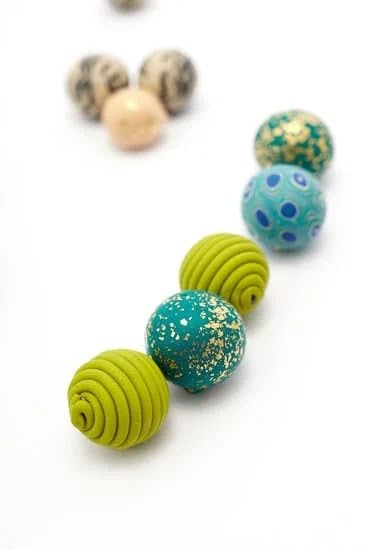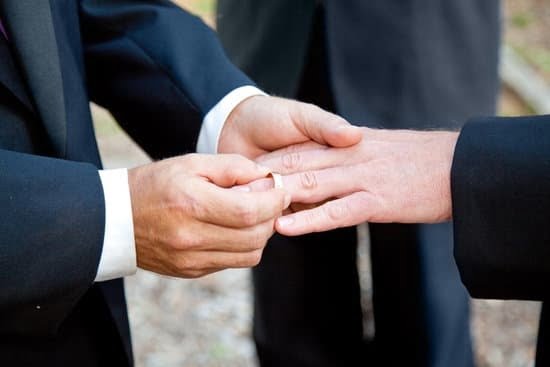Jewelry has been a form of personal adornment for centuries, with each piece telling a unique story about the culture and history from which it originated. With the history of jewelry for kids, they can explore the fascinating evolution of this art form and gain a deeper appreciation for its significance.
From ancient civilizations to modern trends, the history of jewelry is rich and diverse, offering children an opportunity to learn about different cultures, traditions, and craftsmanship. By understanding the origins and symbolism behind different types of jewelry, kids can develop a broader perspective on art and fashion.
In this article, we will take a journey through time to explore the history of jewelry for kids. From ancient adornments to contemporary trends, we will delve into the intricate designs, cultural influences, and materials that have shaped the world of jewelry. Through this exploration, children can gain a better understanding of how jewelry has been intertwined with human civilization and self-expression throughout history.
Ancient Jewelry
Jewelry has been a part of human culture for thousands of years, and it’s important for kids to learn about its fascinating history. By understanding the origins of jewelry, children can gain insight into different cultures, traditions, and artistic expressions. Learning about ancient jewelry can also help kids develop an appreciation for craftsmanship and creativity.
Here are some key aspects of ancient jewelry that kids can explore:
- Materials: Ancient civilizations used a variety of materials to create jewelry, including shells, bones, stones, and later on, precious metals like gold and silver.
- Symbolism: Many ancient cultures imbued their jewelry with symbolic meaning, using designs to represent concepts such as fertility, protection, or social status.
- Techniques: Kids can learn about the intricate methods used to create ancient jewelry, such as filigree work, granulation, and cloisonné.
By studying ancient jewelry, kids can gain a deeper understanding of our shared human history and appreciate the artistry and skill that went into creating adornments in the past. This knowledge can inspire them to create their own pieces or simply develop a greater admiration for the jewelry they encounter in their daily lives.
Jewelry in Different Cultures
When exploring the history of jewelry for kids, it’s important to delve into how different cultures have contributed to the rich tapestry of adornment. Understanding the significance and symbolism behind jewelry in various cultures can help kids appreciate diversity and learn about the traditions of people from around the world.
Here are some examples of how jewelry has played a significant role in different cultures throughout history:
- Ancient Egypt: The ancient Egyptians were known for their extravagant use of jewelry, particularly gold. Children can learn about the intricate amulets, necklaces, and bracelets that held both decorative and religious importance.
- Native American Jewelry: The indigenous peoples of North America have a long tradition of crafting beautiful jewelry, often using materials such as turquoise, silver, and beads. Kids can discover the meanings behind symbols like feathers, animals, and geometric patterns.
- Chinese Jade Carvings: In Chinese culture, jade has been revered for thousands of years. Kids can explore the artistry behind jade carvings used in ornamental pieces and understand their significance in Chinese tradition.
By learning about jewelry in different cultures, kids not only gain insight into the history of adornment but also develop an appreciation for diversity and cultural traditions.
Medieval and Renaissance Jewelry
During the Medieval and Renaissance periods, jewelry became an important form of expression for both adults and children. The designs were often intricate and detailed, with a focus on symbolism and storytelling. Kids today can learn so much from exploring the history of jewelry during this time, from understanding the significance of different symbols to appreciating the craftsmanship that went into creating each piece.
Symbolism in Medieval and Renaissance Jewelry
In Medieval and Renaissance jewelry, symbolism played a significant role. Many pieces were adorned with symbols that held religious, cultural, or personal significance. For example, certain gemstones were believed to possess healing powers or provide protection, while specific motifs like crosses or animals held religious or symbolic meanings. By learning about these symbols, kids can gain insight into the beliefs and values of people during those times.
Intricate Designs and Craftsmanship
The craftsmanship involved in creating jewelry during the Medieval and Renaissance periods was truly remarkable. Artisans paid meticulous attention to detail and often incorporated complex techniques such as filigree work, enamel painting, and intricate metalwork. By examining these pieces, kids can appreciate the skill and dedication required to produce such beautiful works of art.
History-Inspired Activities for Kids
To further engage kids in learning about Medieval and Renaissance jewelry, parents and educators can organize hands-on activities that allow children to create their own history-inspired pieces. This could involve using simple materials like beads, wire, or clay to mimic the styles of jewelry from those eras. By doing so, kids can gain a deeper understanding of the significance of jewelry throughout history while also expressing their creativity through art projects.
Victorian Era Jewelry
During the Victorian era, jewelry underwent a significant transformation, and this is an important part of the history of jewelry for kids to learn about. The Industrial Revolution brought about advancements in technology and mass production, making jewelry more accessible to a wider range of people, including children.
This era saw the rise of costume jewelry, made from less expensive materials and often imitating the look of fine jewelry. Kids can learn how these developments allowed them to have their own adornments without the need for expensive gemstones and precious metals.
Fashion also played a crucial role in shaping Victorian era jewelry. Queen Victoria’s love for symbolism greatly influenced the design and choice of motifs in jewelry during this time. For kids, learning about these symbols and meanings behind them can be both educational and fascinating. From hearts symbolizing love to flowers representing emotions, understanding the significance behind these designs adds depth to their appreciation of jewelry.
Furthermore, it is important for kids to grasp how societal changes during the Victorian era affected the wearing of jewelry among different social classes. The emergence of the middle class saw a growing demand for affordable yet fashionable adornments, while elaborate and opulent pieces remained exclusive to the upper class. Learning about this aspect of history can help kids understand how economic and social dynamics have always played a role in fashion and access to adornments throughout history.
Jewelry in Pop Culture and Fairy Tales
The history of jewelry for kids is a fascinating journey that includes exploring its presence in pop culture and fairy tales. From princesses to superheroes, jewelry has played a significant role in the stories and legends that captivate young minds. By learning about the historical significance of jewelry in these contexts, kids can gain a deeper appreciation for the cultural and symbolic value of adornments.
Pop culture icons such as Disney princesses have popularized certain jewelry styles, such as tiaras and glass slippers, which are often associated with royalty and elegance. These symbols not only reflect fashion trends of their respective time periods but also convey important messages about power, beauty, and identity. Furthermore, superhero accessories like Wonder Woman’s tiara and Captain America’s shield pendant offer children insight into how jewelry can represent strength, courage, and heroism.
Fairy tales also feature jewelry as important plot elements or symbols of character traits. For instance, Cinderella’s glass slipper represents her transformation from rags to riches and her eventual reunion with Prince Charming. By understanding these narratives, kids can learn valuable life lessons through the symbolism attached to different types of jewelry.
Moreover, exploring the history of jewelry in pop culture and fairy tales allows kids to analyze themes such as good versus evil, fantasy versus reality, and the power of imagination. Through these stories, children develop their creativity while broadening their cultural knowledge about how jewelry has been used as a means of self-expression and storytelling throughout history.
| Pop Culture Icons | Fairy Tale Symbols |
|---|---|
| Disney Princesses | Glass Slipper – Cinderella |
| Superhero Accessories | Tiara – Wonder Woman |
Modern Jewelry
In today’s modern world, jewelry has evolved to encompass a wide range of styles and materials that appeal to kids. From colorful and fun pieces to more sophisticated designs, modern jewelry offers something for everyone. With the rise of technology and social media, kids are now more exposed to various trends in jewelry, making it an exciting time for them to explore and express their own personal style.
One of the most notable aspects of modern jewelry for kids is the use of contemporary materials. While traditional metals like gold and silver are still popular, there has been an increasing trend towards using alternative materials such as stainless steel, titanium, and even recycled materials. These materials not only offer durability but also provide endless possibilities for creative and unique designs that kids can relate to.
In addition to the shift in materials, modern jewelry for kids also features trendy styles that resonate with their youthful energy. From customizable charm bracelets and friendship necklaces to colorful enamel pins and birthstone rings, kids today have a wide array of options to choose from. This allows them to experiment with different looks and express their individuality through their accessories.
Another significant factor shaping modern jewelry trends for kids is the influence of celebrities and social media influencers. With platforms like Instagram and TikTok becoming increasingly popular among younger generations, they are constantly exposed to the latest fashion trends and styles endorsed by their favorite celebrities. As a result, they are more inclined to embrace these trends when it comes to choosing their own jewelry pieces.
Overall, modern jewelry offers a diverse range of options for kids to explore and identify with. It reflects the current cultural landscape while providing opportunities for self-expression and creativity. By learning about contemporary trends in jewelry, kids can gain a deeper appreciation for how this form of adornment continues to evolve in today’s society.
DIY History-Inspired Jewelry Projects for Kids
In conclusion, learning about the history of jewelry can be a fascinating and educational experience for kids. From ancient times to modern trends, the evolution of jewelry reflects the cultural, social, and technological changes throughout human history. By understanding the significance and craftsmanship behind different styles of jewelry, kids can gain a deeper appreciation for art and culture.
Exploring ancient jewelry can give kids a glimpse into the first forms of adornment used by early civilizations. From simple beads to intricate designs, they can learn about the materials and techniques that were used to create these ancient treasures. Additionally, discovering the role of jewelry in different cultures provides a colorful and diverse history for kids to explore, fostering an understanding and respect for cultural diversity.
As they delve into the intricate designs and symbolism of medieval and Renaissance jewelry, kids can appreciate the craftsmanship and artistic expression that went into creating these pieces. Furthermore, learning about Victorian era jewelry offers insight into how fashion and industrial revolution influenced access to jewelry for people of all ages, including children. Overall, educating kids about the history of jewelry not only enriches their knowledge but also encourages creativity and self-expression through DIY history-inspired jewelry projects.
Frequently Asked Questions
What Is a Brief History of Jewelry?
Jewelry has been worn by humans for thousands of years, with evidence of ancient cultures adorning themselves with decorative items. From ancient Egypt to the Roman Empire, jewelry has held a significant role in various societies and has evolved over time.
What Is Jewelry Definition for Kids?
For kids, jewelry can be defined as decorative items that are worn on the body, such as necklaces, bracelets, earrings, and rings. These items are often made from precious metals and gemstones and are worn for adornment or to signify symbols of importance or love.
What Is the Origin of Wearing Jewelry?
The origin of wearing jewelry dates back to ancient civilizations where people used natural materials like shells, bones, feathers, and plants to create decorative items for personal adornment. Over time, different cultures developed unique styles and techniques for making jewelry, leading to its widespread use around the world.

Welcome to my jewelry blog! My name is Sarah and I am the owner of this blog.
I love making jewelry and sharing my creations with others.
So whether you’re someone who loves wearing jewelry yourself or simply enjoys learning about it, be sure to check out my blog for insightful posts on everything related to this exciting topic!





